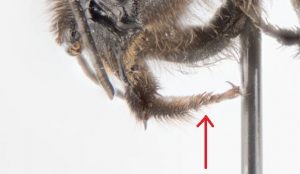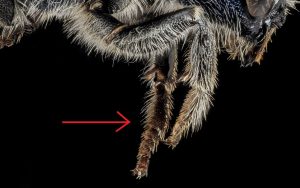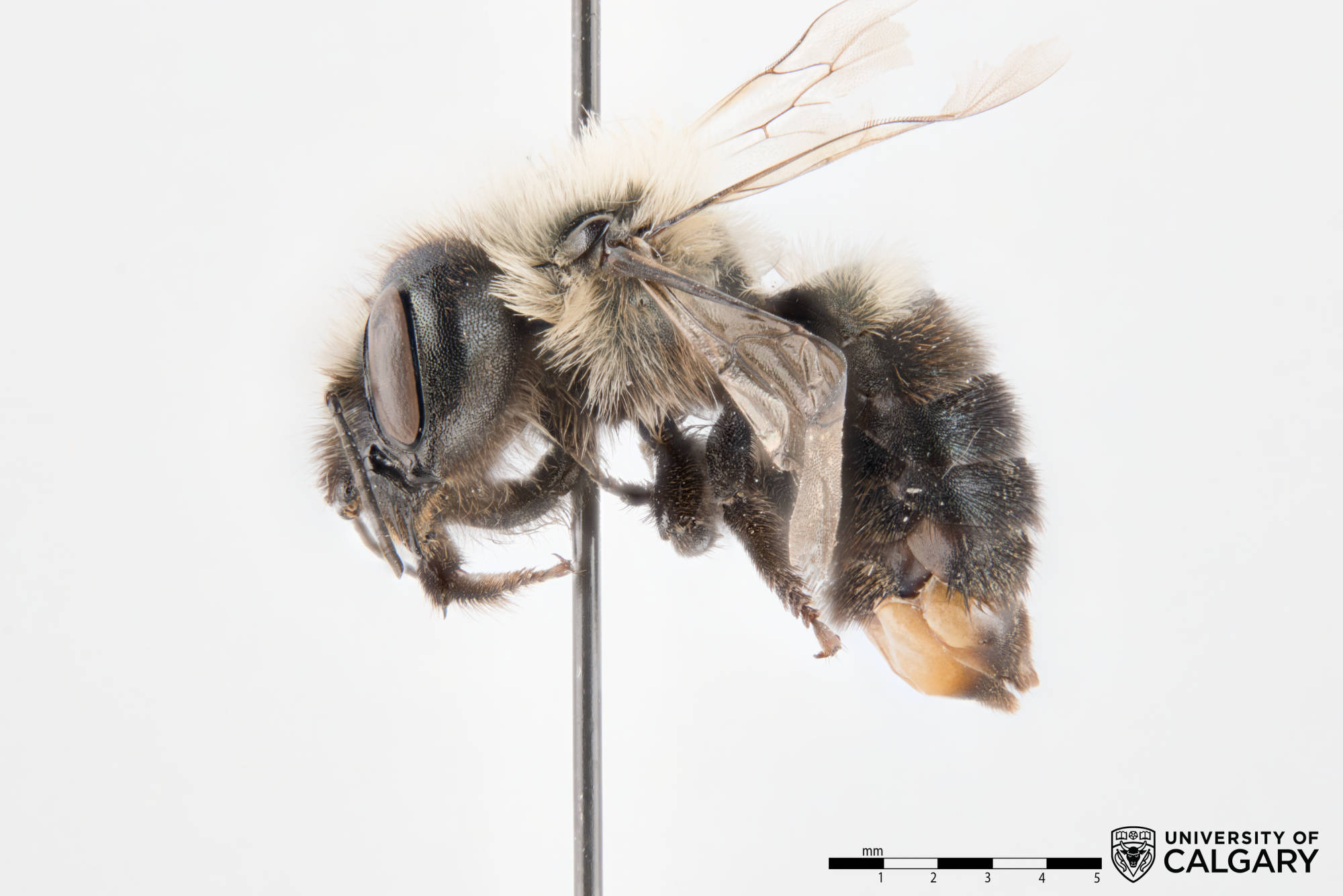Functions
Get, Store or Distribute Resources – Distribute – Solids
The basitarsal brush is a collection of hair on the last segment of the foreleg. This brush is used during pollination. As bees forage, they can rub the anthers of the flower on their faces and collect pollen all along their heads. The bees then use the brush on their leg to remove the pollen and place it on structures designed for pollen transport. The brush may also be modified to collect oil from flowers, with the ability to do so arising independently in multiple groups.1
A brush is defined as a group of hairs with little organization, in comparison to a pollen comb in which the hairs make up a single row. 1
Similar brushes may be found on the tarsus and femur of the hind and mid legs. Variation is seen in the size, density and shape of the hairs that make up the brush, based on the type of pollen collected and any specializations for other substances like oil or nectar.




Top left: Osmia bucephala from the University of Calgary
Top right: Osmia distincta from the USGS Bee Inventory and Monitoring Lab
Bottom left: Osmia texana from the USGS Bee Inventory and Monitoring Lab
Bottom right: Osmia lignaria from the USGS Bee Inventory and Monitoring Lab
Some of the stunning images on this page are courtesy of Sam Droege and the USGS Bee Inventory and Monitoring Lab, which develops identification tools and surveys for native bees.
This page was created by Holly Kerstiens in collaboration with Dr. Mindi Summers, Dr. Marjan Eggermont, Dr. Jess Vickruck, Lincoln Best and Dr. Alex Ralevski as part of an independent studies project in winter 2019. This information is also available as a collection on AskNature.org.
Sources
1 The Bees of the World
Hopkins Fulfillment Service. 2007.
Michener, C.D.
